
Login
X
- Home
- About Us
- Courses
- Graduation
- Diploma Certificate
- Professional Diploma
- Special sessions / Aptitude boost up
- News & Events
- Student zone
- Placement
- Gallery
- FAQ
- Contact Us

A multimedia degree is a that enables students to gain practical knowledge and skills about media technology. The demand for multimedia specialists is rising in India. Most students are increasingly choosing multimedia courses. Students have immense learning opportunities through this skilled degree programme. This is due to how quickly computer technology evolves. The most recent technology today can be outdated tomorrow. Thus, multimedia courses provide a wide range of topics and in-depth understanding pertaining to computers and numerous cutting-edge technologies. So, let’s take look at why multimedia a skilled degree programme:
Students who take multimedia courses have the chance to be both technically proficient and artistically inventive. These courses’ components can be applied to both successful web design and building a career in the film business. Those who succeed in earning an honours or master’s degree in multimedia can find success in a variety of different industries. Students enrolled in the multimedia programme can develop interactive presentation materials and learn how to use computer programmes. This programme comprises the use of all forms of media, including photography, journalism, scriptwriting, filmmaking, printing media, editing, advertising, and more. They learn how to create websites using tools like Cascading Style Sheets (CSS) or Adobe Creative Suite (Photoshop, Flash, Illustrator, Dreamweaver).
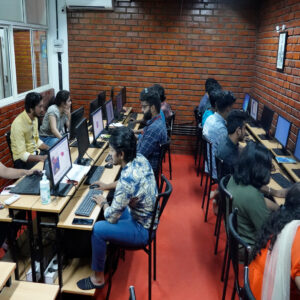
A majority of colleges offer excellent lab facilities along with multimedia courses to all their students. They plan lectures and workshops for students to benefit them throughout their academic careers. The three-year degree programme is well-designed and gives students practical training. They have an active campus life and knowledgeable faculty that individually supervise each student.
You can learn about a variety of topics, including graphic design, animation, visual effects, and multimedia programming, by taking a high-quality multimedia course module. You can sharpen your skills and master a variety of cutting-edge software through this experience.
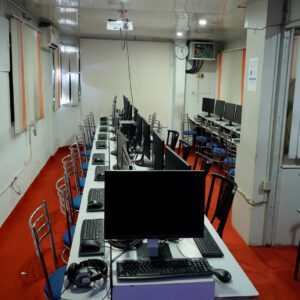
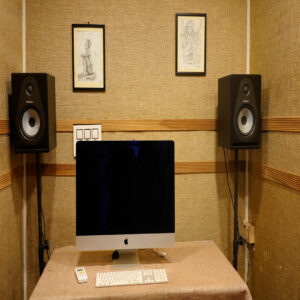

The entertainment and multimedia market growth is quite diverse and has recently changed in terms of technology and applications. Global entertainment and media companies have adapted to this transformation to stay competitive in the multimedia market growth by offering innovative content and effective distribution models. Market players are developing a variety of strategies to drive multimedia market growth.
Virtual reality (VR) is gaining traction in the television and radio broadcast industry. Since audiences may connect with significant events through a dynamic environment, live events like sports and music are predicted to increase demand for VR adoption during the forecast period. Growing demand for VR content is expected to drive future market growth. Aside from being one of the world’s fastest-growing marketing markets, India is regarded as one of the top high-rollers in the industry. Younger populations, a rapidly growing working class, and the advent of ‘Advanced India’ drives have all contributed to the rapid rise in web access.
The growth of the media market is primarily due to the divisions’ of TV & Video and Games, even though traditional media is more likely to either freeze or shrink overall. The media market’s digital media divisions will certainly continue to dominate even after the pandemic, although this beneficial effect leads to additional growth.
The market benefited from the rising popularity of online video streaming services like Hotstar, Netflix, Amazon Prime, and others. As a result of social withdrawal, staying at home, and isolation, media consumption increased, resulting in more TV watching, indoor use of luxury apps, and social media chats, which increased the market’s activity.
Media consumption will display steady growth in the future as new technologies and ways of consuming media improve. The media industry, for example, will encounter an entirely new dimension with the advent of the metaverse that will be available to customers and offer new opportunities for consumption. Overall, the media industry is moving away from traditional channels like print or non-digital media and toward digital ones. This influence is anticipated to spread throughout the entire market and in every region.

The UI trends were about to take a new turn. As new technologies emerge, UI trends may become much more innovative in 2022 than in the past few years. UI design trends had a fascinating year in 2021. It is clear from the previous year’s events that technology usage will undergo significant changes in the coming years. So, let’s take a look at the UI trends of 2022:
Dark Mode
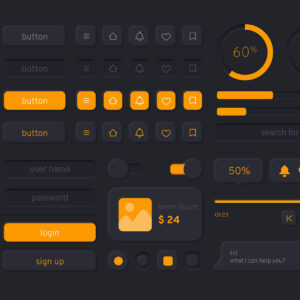
A return to a dark mode or dark themes is one of the top UI UX trends for 2022 as opposed to a white backdrop with lots of white space in 2021. The dark mode has been around for a while. More websites and apps now let users switch between a high-contrast dark mode and a light one.

One of the top UI UX trends for 2022 will be the three-dimensional art of 3D design, which will promote your interface. In light of the gradual globalization of commerce, this is just what your industry wants. Beginning in 2021, new themes for Windows 11 will have 3D wallpapers. However, the launch of 5G technology offers a faster rate of data transmission.

To ensure their apps are ready for large screens, especially desktops, Google is urging you to prepare them for large screen sizes. UI UX trends in 2022 indicate that larger screens, including foldable phones and desktop computers, are already a part of the future. Most app interfaces are designed for mobile phones by app designers.

A design system helps designers to produce work quickly while maintaining a uniform level of quality and standard. It creates a shared library of UI design that can be used by everyone within a company or by outside parties. It used to be that design systems were accessible only to bigger companies due to their time-consuming nature. In 2022, companies of all sizes will be able to create their design systems.

Offering users customized and localized user experience and the content will be the focus of 2022. Users should be able to alter their dashboards, notifications, and the items they view on platforms. Also, research should be conducted to identify the localized UX requirements for each market.

The number of choices available to students when choosing higher education after high school is enormous. Traditional Degree vs. Vocational Degrees is two of the options available to graduates. The fundamental distinction between Traditional Degree vs. Vocational Degrees is between theory and practice. Typically, traditional degree-granting schools and universities offer courses designed to give students a strong foundation of knowledge and abilities in a wide range of subject areas. By contrast, vocational education tends to offer occupation-specific programs aimed at preparing students for direct employment. So, let’s take a look at the difference between Traditional Degree vs Vocational Degree.
Vocational Degree


In vocational courses, practical on-site experience predominates over classroom lectures as the primary method of instruction. Because of the way the course is structured, students who complete it are fully prepared for employment, and just minimal introductory training is needed. Students who complete vocational programmes will have a wealth of work experience to show, giving them an edge over their competition.
Vocational education often consists primarily of practical training with some theoretical instruction. For example, if you were learning to be an architect, you’d spend less time learning but much more time practising. The building would be a better way to spend your time than in a classroom. Building something would be much more fulfilling than sitting in a classroom. Students who attend vocational schools get hands-on training in these skills and knowledge, which employers seek right out of school.
Traditional Degree

Students strongly favour traditional programmes like the B.A., B.Com, and other similar degrees. The majority of these courses follow a classroom teaching methodology in which students are taught the majority of the subject material in class via theories and case studies. Their only exposure to practical knowledge is through internships, where they encounter a significant disconnect between what they learned in school and what they meet in the real world of work. Academe focuses more on understanding concepts in a theoretical setting than on applying them in practice. A standard, on-campus degree certainly has its advantages, but an online degree can provide advantages for your immediate and long-term academic goals. Therefore, it is preferable to select the ones that suit your preferences.
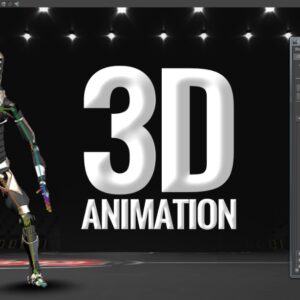
3d Animation is one of the gratifying and lucrative career options today. As technology advanced, those interested in 3D Animation started working in more than only the movie and video game industries. And over time, it has become clear that professions in the animation industry require more than simply artistic talent—one also needs to have strong design and art skills and good observational skills. Under the general category of Animation are numerous job profiles.

Where you learned about art may be one of the most crucial components of your future portfolio. Hiring managers want to see during job interviews that you have invested time in honing your abilities through art classes and other activities. Due to the field’s expansion, there is an increasing demand for 3D animation. There is a growing integration of animation technology in a wide range of industries, including marketing, forensics, medicine, engineering, and architecture.
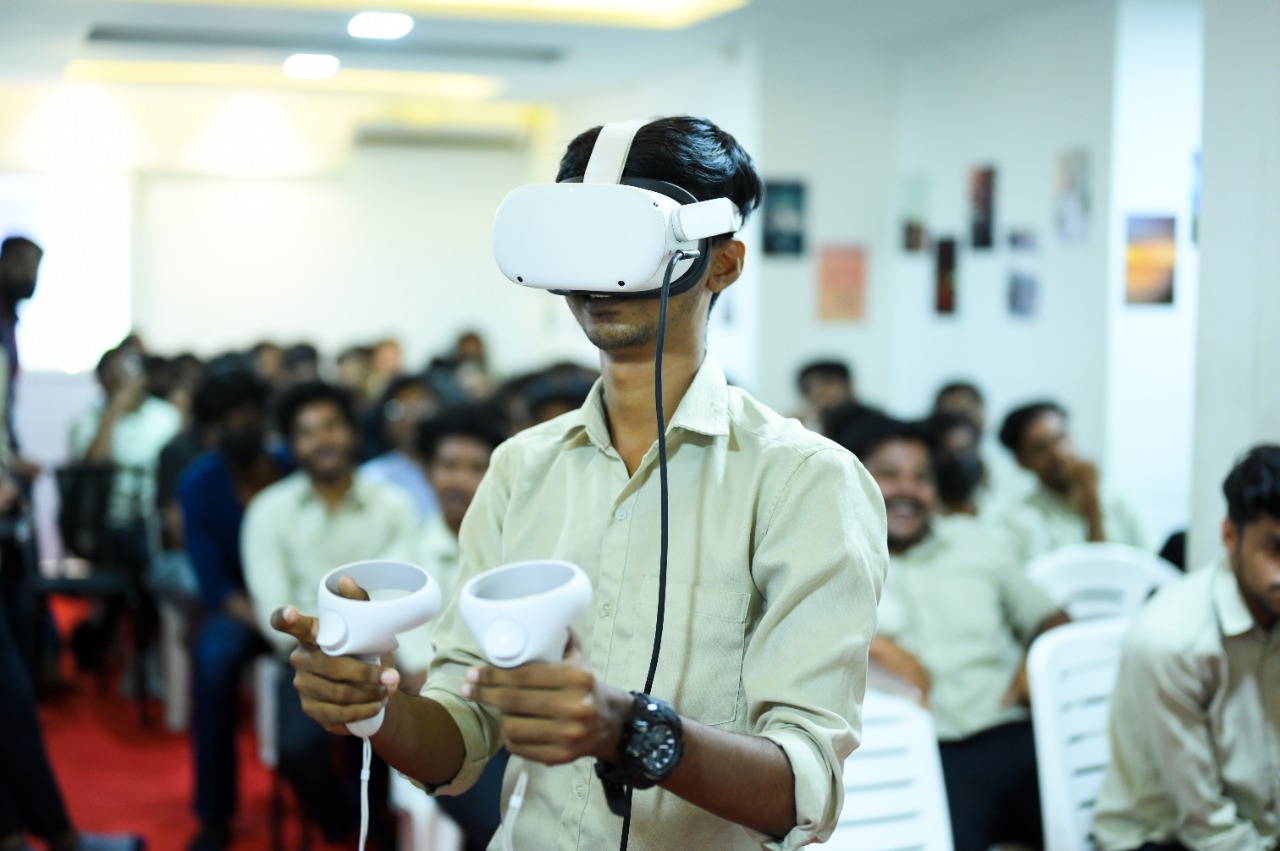
The animation industry in India is considered one of the most important in the world, making it an excellent place for aspiring animators to pursue careers. In the animation industry, artists experience high levels of artistic satisfaction and their incomes are flexible based on their work history and experience. Candidates interested in an animation career should pursue a degree from an accredited college in animation in addition to possessing design, unconventional thinking, innovative ideas, and concepts skills.

The entertainment and gaming industries have expanded, which has led to more job opportunities for animators. The use of special effects in film, television, and advertising has overtaken these sectors over the years. Many people are interested in watching full-length animated films. One animated feature may require 500 animators, which means there are a lot of job opportunities.
Young people are flocking to the field of animation because it is rewarding and lucrative. In animation studios and production houses, newcomers to the industry typically hold junior animator positions.
Multimedia artists are required in a number of different sectors. With a degree in animation, you can work in the fields of entertainment, art and design, computing, marketing, filmmaking, digital news media, and online education. The animation will continue to undergo quick modifications and improvements due to technology.
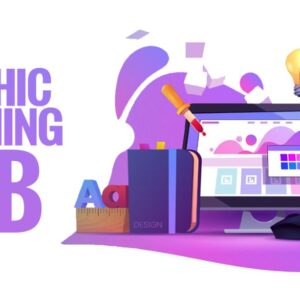
Graphic design is a lucrative career path for those who have an artistic vision for their future. The ability to work remotely opens up when starting a graphic designing job in the increasingly digital era. Every industry opens several graphic designing job opportunities for aspiring creative minds. The graphic designing profession requires a high level of inventiveness and the ability to convey thoughts effectively through words and images. So, let’s take a look at the criteria needed for Graphic designing job interview.

A comprehensive degree from a recognized college is often required to pursue a job as a graphic designer. A four-year bachelor’s degree or an associate’s degree, which typically takes two years to finish, are both options for students. These courses are offered by numerous colleges and institutions, both on-campus and online.
Employers are looking for candidates with suitable experience in graphic design. 
They might favour candidates with at least three years of work experience for entry- or mid-level employment. Jobs requiring more experience, such as those in management or direction, may call for at least six years. Aspirants can start developing experience while still in school, frequently by taking part in internships or working part-time jobs.
Strong portfolio

Employers and clients usually request portfolios from prospects when recruiting graphic designers. A portfolio is a compilation of their best work in visual form.
Technical skills

The skills that graphic designers need are numerous since they use a variety of tools to create their images. These abilities are frequently developed through practice and experience, as well as formal training and educational opportunities.
Soft skills

Employers look for applicants that exhibit a wide range of soft skills in addition to technical abilities. These abilities reflect a person’s performance in the job and interpersonal interactions. While seminars and other training are available to assist in the development of these skills, graphic designers frequently acquire them through continual practice and professional expertise.
Creativity

In a creative field like graphic design, professionals often find new ways of expressing ideas visually. In addition to creating graphics and images that attract consumers, they brainstorm and experiment with different design methods.
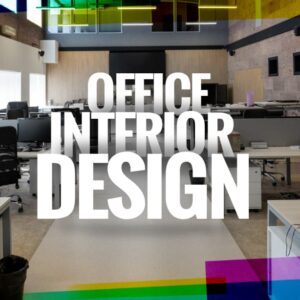
An office interior design should be a simple, functional, and true match to the corporate culture. In an age when thousands of office interior design trends are constantly popping up, it is easy to lose sight of what an appropriate office space should look like. On that note, let’s discuss some interior design dos and don’ts.
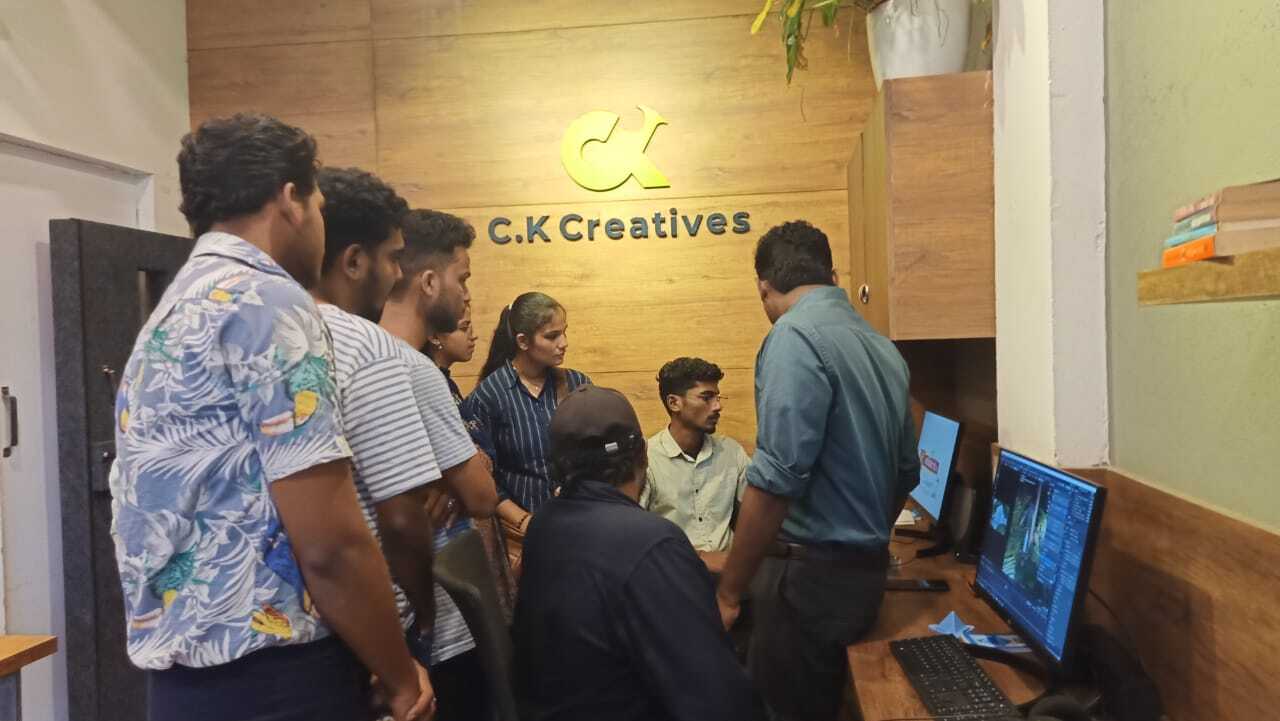
Natural light is essential for an excellent office interior design, especially if you’ll spend most of your day there. The value of natural light cannot be overstated because it significantly reduces your need for electricity. In addition, exposure to natural light is incredibly energizing and has a renewed impact on the body, particularly after a hard day at work.

Even though the budget is a major consideration when building an office space, brand identity is still very significant. In other words, investing in your company’s internal infrastructure may sometimes take precedence over your budget. Every item in your office reflects the character of your company.
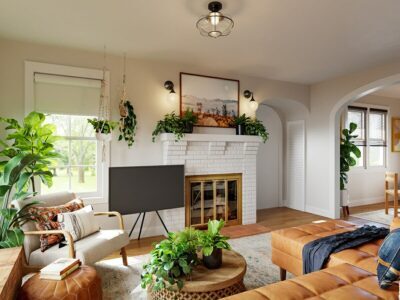
The ideal colour can uplift, inspire, or calm you. You can’t just paint your office any colour you choose. Each hue has a distinctive effect on how people feel and think. If you have an area designated for creative work, consider painting it yellow because it is thought to foster creativity. When setting up a functional home office, the impact of colour is more noticeable.

Many styles have come and gone and then returned, including standing workstations, open plans, and many others. It may be tempting to incorporate each of these trends based on their advantages, but it’s significant to consider a few factors first. Think about your employees, space, and brand before implementing a new trend.
The tendency of simply maintaining the necessary within your area is becoming part of good workplace design culture. By attempting to reduce clutter, minimalism creates more room. This is said to promote an effective flow of creativity and productivity. Consider only what you require while planning an office space. Consider getting a lighter version of what you need if it works correctly.

Multimedia in the metaverse is no longer a futuristic notion. A critical concept in modern technology, multimedia in the metaverse describes a constant 3D virtual world where avatars allow people to interact with each other based on their activities. Gaming and entertainment, business and professional meetings, and financial transactions are among these activities. Even though the precise scope and effects of multimedia in the metaverse on the economy are yet unknown, it is already clear that the metaverse will present several opportunities as well as threats in many policy sectors.
Online networking and communication have become more popular through virtual communities and technological means such as video conferencing. The metaverse offers consumers a variety of real-world capabilities in a 3-D immersive world to enhance their current digital experience. Although 3-D technology is not brand-new, it has improved through time with numerous versions. The application of 3-D reconstruction has grown across numerous industries, particularly in the real estate sector.
There are countless opportunities in the metaverse for the multimedia sector. Unleashing personal creativity, investigating immersive experiences and narrative, and creating new worlds are three important verticals that will shape entertainment in the metaverse in the future.
Businesses are investing in delivering comparable experiences in the metaverse. For instance, a South Korean company called Netmarble has launched a VR platform called Metaverse Entertainment to promote K-pop. The expansion in the metaverse will create several job opportunities in the multimedia industry.
Although it has been in the news for a while, the metaverse is currently all the rage. People now only have a limited understanding of the metaverse, thus recruiters look for candidates with extensive research skills who can learn more about it in a way that will be advantageous to their employer.
Any newbie will be unsure if the metaverse can provide any jobs, and if so, what kinds they might be. There are a variety of professional options in Metaverse across several industries. Several job positions include Metaverse product designer, community manager, game designer, 3d modeller, etc. A multitude of new metaverse experiences is being developed by game designers: boss fights, quests, combat spaces, and more. Across the metaverse, community managers help maintain smooth and safe communication between creators, consumers, and brands.
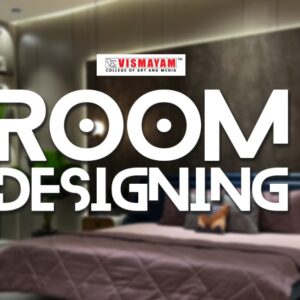
Interior design trends are ideas central to a project around which elements are designed; they are the thread connecting all the pieces and defining their character. The room designing trends in interior design are vast and varied each year. There are some new colours, new textures, and new materials, and new creative blends come into room designing every year.So, let’s take a look at the top room designing trends in interior designing.
Statement ceilings have entered the current trends in interior design. Both residential and commercial rooms can feel different when using vibrant color schemes, reflecting fixtures, and painted art on ceilings. Although odd, this most recent interior design fad offers an intriguing appearance and gives the space a pleasant, unique touch.
The interior design trends are trending toward warmer tones and natural elements as people move towards an eco-friendlier lifestyle. A natural look is emphasized in your space when you use decor elements made with real or faux natural materials. Natural wood is used everywhere in the newest trends, including flooring, countertops, accent decor, and cabinetry. This will totally change the atmosphere of the room.
The classic elegance of black and white finishes is the latest trend in interior design. Black furniture elements, window frames, lighting fixtures, and polishes are all in vogue this season. Despite being popularized by Scandinavian design approaches, black and white designs, patterns, decors, and accessories are still in demand.
Although concrete has long been a popular material for flooring and countertops, it is now also being utilized in more inventive and surprising ways, such as for furniture and home design items like pendant lights. Concrete can be used in inventive ways other than just as a surface in 2022 room design trends.
It stands to reason that a contemporary room design trend would centre on sustainability as more people become environmentally aware. Sustainability relates to reducing environmental impact. For instance, cutting down a tree to make a brand-new bookshelf has a greater impact than buying a used one. Try thrift stores before committing to buying something new if you want something that matches your design aesthetic.
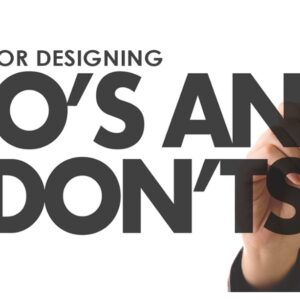
Designing or decorating a space without a perfect strategy is a daunting task. It is especially significant to have the best plan and create it before you begin the work of home interior designing. It is important to pay attention to home interior design do’s and don’ts. Trained and experienced interior designers know how to decorate an interior and are aware of home interior design do’s and don’ts. The desire to decorate one’s own home is common among many people. But it is advisable to hire the best interior designers to decorate your home interior. So, let’s take a look at the home interior designing do’s and don’ts.
Make your home warm and cool by combining warm and cool colors. Additionally, you can enhance your interior by using various prints and designs within the same colour family. In a space with several colors and prints, a (large) floor rug can also tie everything together and ensure that it complements one another.
People frequently choose incorrect product formats for their homes. Instead of purchasing one large item, it is advisable to buy several smaller ones and use them together. The sum will appear greater when you combine several smaller items.
Visually connecting the nearby locations will help to create harmony and flow between them. Incorporate a pattern or color accents into a second space, or carry a style, motif, or mood from one room to another.
Before remodeling or decorating your home, or even simply your bedroom or living room, choose the tone you want to set and how you want it to feel. A crucial consideration is determining the functionality of every room in the house.
It would be a great idea to decorate your walls with old oil paintings, modern paintings, or black and white wedding pictures that tell your family’s history. Almost any wall in your house can become an art gallery.
Your interior space must be measured and decorated accordingly. Don’t forget to measure all sides and measure it multiple times. Make sure, for instance, that the furniture you order will enter through the door.
Phone: 0495 272 2242